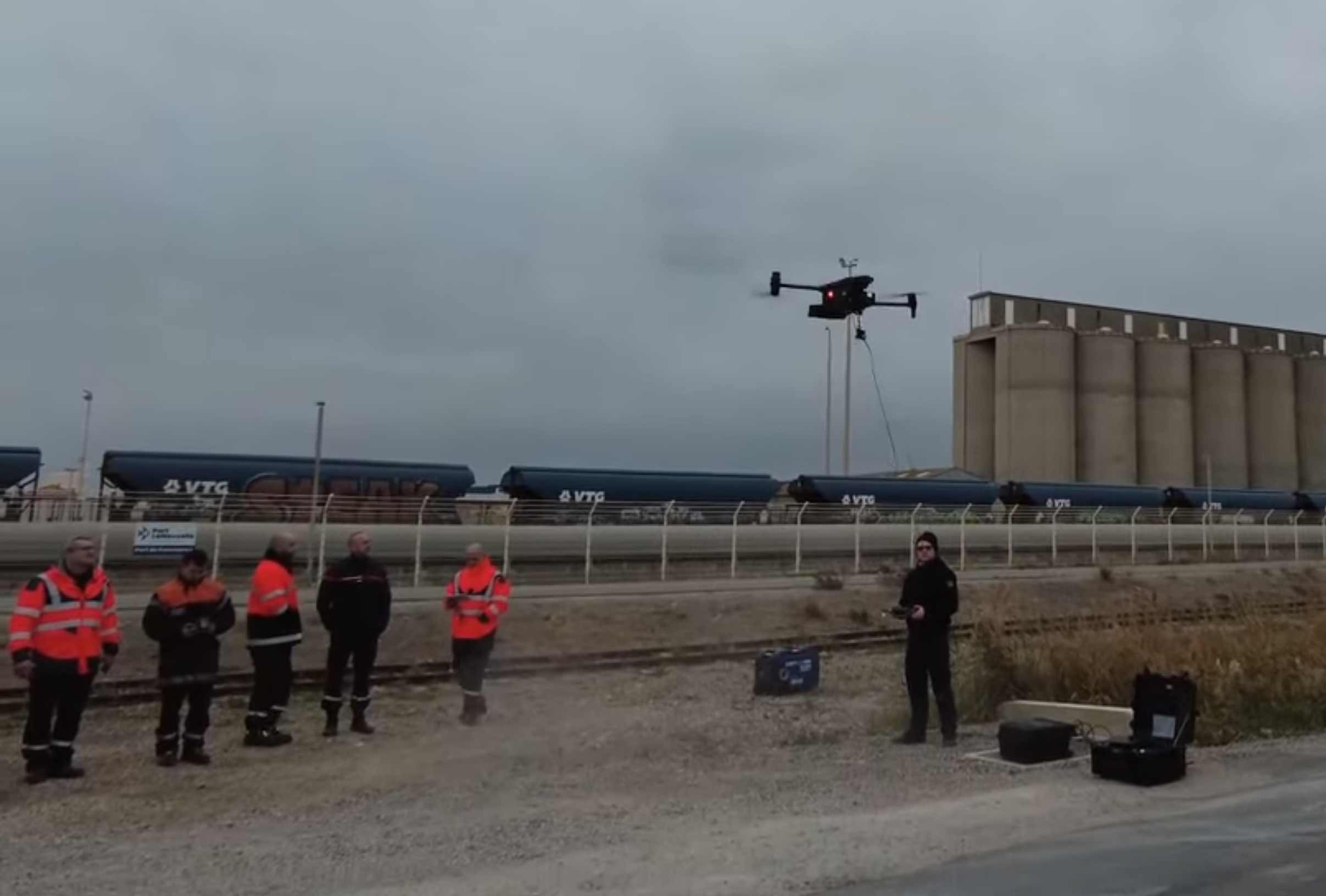Firefighters’ Monitoring Exercice
3km coverage
The exercise took place at an industrial site in Port-La-Nouvelle, France, and mobilized various teams, including specialized chemical risk units and a drone unit. The scenario simulated a gas leak on a transport wagon, putting the teams in realistic conditions to test their preparedness and response capability.
Solution
SDIS 11 (Aude Departmental Fire and Rescue Service) were looking for a solution that could provide continuous surveillance during emergency situations. Elistair’s Ligh-T tether station was tested to meet the needs of this particular requirement due to its ability to extended a drones flight time to several hours. This resulted in the success of this particular exercise.


Information Transmission and Decision-Making
One of the key aspects of a tethered drone is its ability to transmit images in real time to the SDIS central server, enabling rapid, informed decision-making. “The drone enables us to transmit images directly to our central server at SDIS, so we can share this information and query our server remotely” explains Stéphane Bousquet. This feature ensures that decisions taken by the emergency operations command are based on up-to-date, accurate information.
Result of the Mission
At the end of the exercise, a technical debriefing confirmed the complementarity between the use of a tethered drone and a “classic” drone, making it possible to combine continuous vision and mobility. Feedback underlined the effectiveness of the tools deployed, reinforcing the Emergency Operations Center’s ability to manage operations more finely and effectively.

The success of this mission opens up new possibilities for SDIS 11, such as forest fire surveillance. In this case, the tethered drone provides a clear, continuous view of burnt areas, enabling rapid, targeted intervention and reducing the risk of fires spreading.
“Tethered drones and conventional drones are not competitors, but complementary.”
Featured product
Download The Use Case
You'll receive it by email






